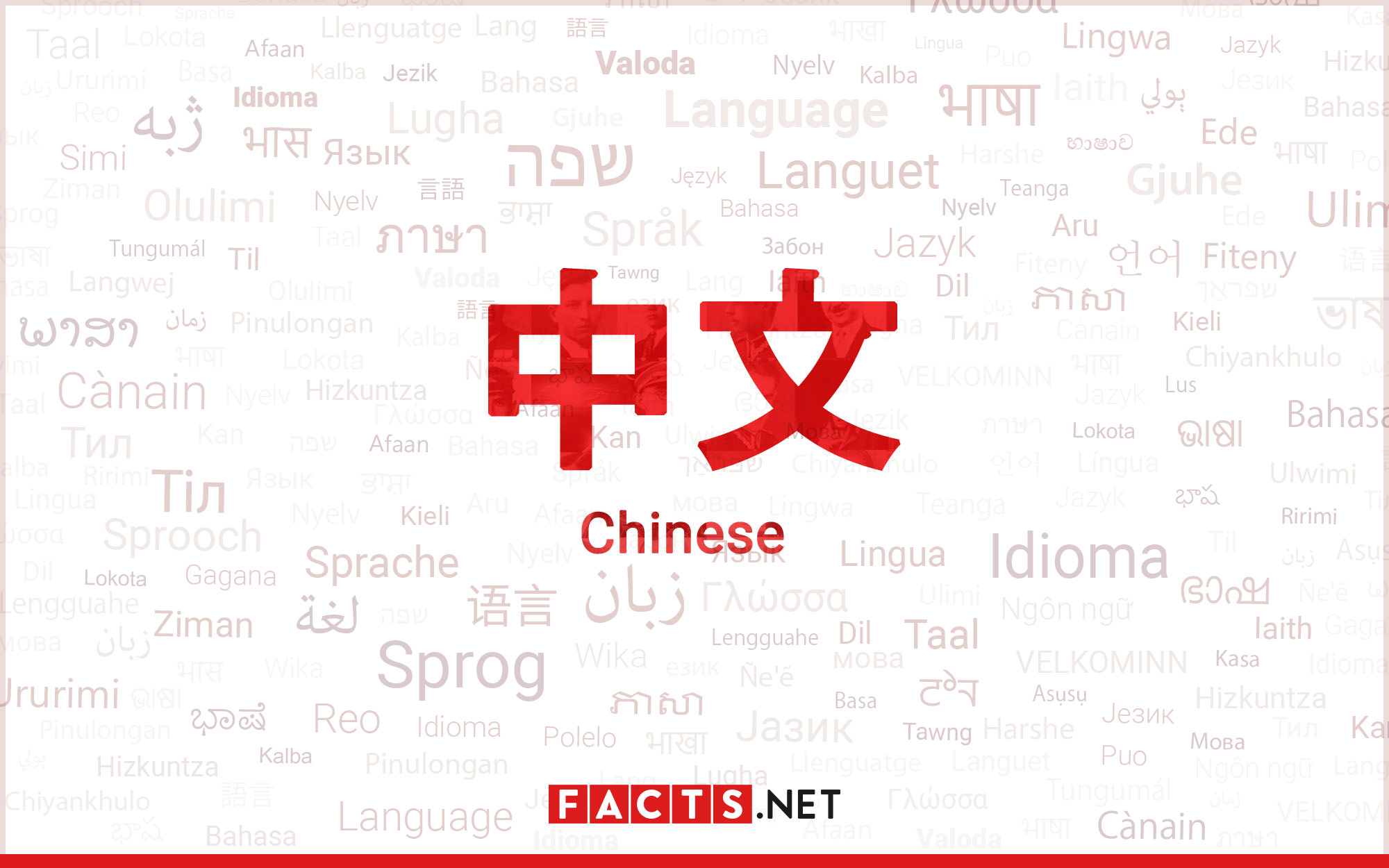
The Chinese language, also known as Xiang, is one of the most fascinating and widely spoken languages in the world. With a rich history spanning over thousands of years, Chinese has captivated linguists, scholars, and language enthusiasts alike. From its complex writing system to its tonal pronunciation, Chinese presents a unique and unparalleled linguistic experience.
In this article, we will explore 16 unbelievable facts about Chinese (Xiang) that will not only deepen your understanding of the language but also amaze you with its incredible features. From its vast number of characters to its influence on other East Asian languages, Chinese is a language that continues to shape the cultural and linguistic landscape of the world.
Key Takeaways:
- The Xiang Chinese dialect, with over 36 million speakers, is a unique and vibrant language that has its own writing system and rich literary tradition, making it an essential part of Hunan’s cultural identity.
- Learning Xiang Chinese can provide a deeper understanding of the Hunan province’s culture and traditions, while also offering a gastronomic adventure through its distinct culinary traditions and music.
The Xiang Chinese dialect boasts over 36 million speakers.
With a staggering number of speakers, the Xiang dialect is among the most widely spoken languages in China. It is primarily spoken in the Hunan province, making it an essential part of the cultural heritage of the region.
Chinese (Xiang) is one of the eight major Chinese language groups.
As part of the Sinitic language family, Xiang Chinese is classified under the Chinese language group, which includes various other dialects such as Mandarin, Wu, and Cantonese. Each of these dialects has distinctive features and regional significance.
The Xiang dialect has its unique phonetic system.
One fascinating aspect of the Xiang dialect is its phonetic system, which differs from other Chinese dialects. It has distinctive tones and pronunciation patterns, adding to its unique charm and making it a fascinating subject of study for linguists.
Xiang Chinese has a rich literary tradition.
For centuries, Xiang Chinese has been used as a medium of literary expression. Numerous ancient texts, poems, and folklore have been written in the Xiang dialect, showcasing its rich cultural heritage and its significant contribution to Chinese literature.
The Xiang dialect is known for its diverse vocabulary.
The Xiang dialect exhibits a wide range of vocabulary, including unique words and expressions that are not found in other Chinese dialects. This linguistic diversity adds depth and color to the language, making it a fascinating dialect to explore.
Xiang Chinese preserves ancient features of the Chinese language.
Due to its historical development and isolation, the Xiang dialect has managed to retain certain features of the ancient Chinese language. Linguists study Xiang Chinese to gain insights into the evolution and changes of the Chinese language over time.
There are different sub-dialects within Xiang Chinese.
Xiang Chinese can be further divided into various sub-dialects, each with its unique characteristics. Examples include New Xiang, Old Xiang, and Western Xiang, which demonstrate the linguistic diversity within the Xiang dialect itself.
Xiang Chinese has influenced other neighboring dialects.
The Xiang dialect has had a significant impact on the development of neighboring languages and dialects. Its influence can be seen in areas such as vocabulary, pronunciation, and even grammatical structures, illustrating its importance in the linguistic landscape.
The Xiang dialect has its own writing system.
While most Chinese dialects use standard Chinese characters, Xiang Chinese has its own writing system known as the “Xiang script.” This unique script provides a means of written communication specifically for the Xiang dialect.
Xiang Chinese has been used in film and television.
Over the years, Xiang Chinese has been featured in various films and television shows, contributing to its visibility and recognition on a global scale. This exposure has helped raise awareness about the Xiang dialect and its cultural significance.
Xiang Chinese is celebrated through cultural festivals.
The Xiang dialect is embraced and celebrated through various cultural festivals held in the Hunan province. These festivals showcase the language, music, dance, and traditions associated with Xiang Chinese, attracting visitors from all over the world.
Learning Xiang Chinese can enhance cultural understanding.
By learning Xiang Chinese, individuals can gain a deeper understanding of the culture and traditions of the Hunan province. It offers a unique perspective and opens doors to interacting and connecting with the local community on a more profound level.
The Xiang dialect is an integral part of Hunan’s identity.
For the people of Hunan, the Xiang dialect represents a sense of identity and pride. It serves as a reminder of their roots, history, and shared heritage, fostering a strong sense of community and belonging.
Xiang Chinese has its own distinct culinary traditions.
The Xiang dialect has influenced the culinary traditions of the region, resulting in unique flavors and cooking techniques. Traditional Xiang dishes are renowned for their spiciness, complexity, and use of local ingredients, offering a gastronomic adventure for food enthusiasts.
Xiang Chinese music is characterized by its distinct melodies.
The Xiang dialect has its own genre of traditional music, which is known for its distinctive melodies and rhythms. Xiang music reflects the region’s cultural values and historical significance, adding to the richness of Chinese traditional music.
The Xiang dialect continues to evolve and adapt.
Despite the ever-changing linguistic landscape, the Xiang dialect continues to evolve and adapt to modern times. It embraces new vocabulary and influences, ensuring its relevance and survival in the dynamic world we live in.
Conclusion
In conclusion, the Chinese (Xiang) language is a fascinating aspect of Chinese culture. With its unique dialect, rich history, and distinct pronunciation, it offers a wealth of knowledge and intrigue. From its prevalence in Hunan province to its influence on other Chinese dialects, Xiang has played a significant role in shaping linguistic diversity in China.
Learning about the 16 unbelievable facts of Chinese (Xiang) has provided us with insights into the language’s complexity and uniqueness. Whether it’s the intriguing tones, the vast number of characters, or the influence of Xiang on the international stage, there are countless reasons to appreciate and explore the intricacies of this fascinating dialect.
So, next time you encounter someone speaking Chinese (Xiang) or have the opportunity to delve deeper into its cultural significance, remember these unbelievable facts and appreciate the richness of this remarkable language.
FAQs
1. What is Chinese (Xiang)?
Chinese (Xiang) is a dialect of Chinese spoken primarily in Hunan province in southern China. It is one of the main regional languages within the Sinitic language family.
2. How many people speak Chinese (Xiang)?
It is estimated that over 36 million people speak Chinese (Xiang) worldwide, with the majority residing in Hunan province.
3. How is Chinese (Xiang) different from Mandarin?
Chinese (Xiang) differs from Mandarin in terms of pronunciation, vocabulary, and grammar. It has a unique set of tones and word formations that distinguish it from other Chinese dialects.
4. What are some famous Xiang-speaking cities?
Changsha, the capital of Hunan province, is one of the most famous Xiang-speaking cities. Other notable cities include Yueyang, Xiangtan, and Zhuzhou.
5. Is Chinese (Xiang) considered a difficult language to learn?
Like any language, learning Chinese (Xiang) requires time and dedication. Its tonal system and complex pronunciation can pose a challenge, but with practice and immersion, it is definitely achievable.
6. How has Chinese (Xiang) influenced other Chinese dialects?
Chinese (Xiang) has had a significant influence on other regional Chinese dialects, particularly in terms of vocabulary and pronunciation. Many common words and phrases in Mandarin and other Chinese dialects have roots in Xiang.
From the unique flavors of
Was this page helpful?
Our commitment to delivering trustworthy and engaging content is at the heart of what we do. Each fact on our site is contributed by real users like you, bringing a wealth of diverse insights and information. To ensure the highest standards of accuracy and reliability, our dedicated editors meticulously review each submission. This process guarantees that the facts we share are not only fascinating but also credible. Trust in our commitment to quality and authenticity as you explore and learn with us.


